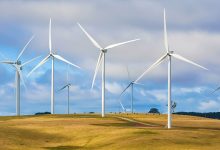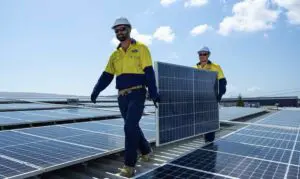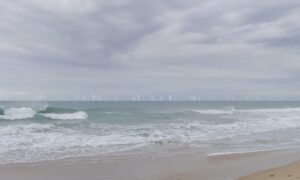Here at ITK we are heads down with our quarterly price forecast update, which is about to be published, and we’ve also been thinking hard about market redesign, focused mainly on the merits and demerits of capacity markets.
But the world doesn’t stop just because we don’t write about it, and so here are a couple of graphs, courtesy – as ever – of Global Roam and NEM Review showing the market status. And it’s not a pretty sight for coal.
Firstly is generation by fuel:
Variable renewable energy (i.e. wind and solar) is up to 18.7 per cent, and electricity spot prices are mostly down on last year. The market share of coal generation has fallen an incredible 8% to a still very high 65% in just 12 months. Gas has picked up much of the slack, particularly in NSW and Queensland.
All categories of variable renewables are up but it’s rooftop (behind the meter) solar that showed the strongest gains. Utility solar would be well ahead were it not for AEMO capping so much output due to system strength issues.

 The strong performance by rooftop solar and ongoing energy efficiency means that demand in front of the meter looks very weak. This is made clearer by comparing 2019 to a five-year average.
The strong performance by rooftop solar and ongoing energy efficiency means that demand in front of the meter looks very weak. This is made clearer by comparing 2019 to a five-year average.
 The overall impact is to lower spot prices compared to the previous corresponding year. However, prices in the futures market are little changed in months. ITK’s view remains that traders are more likely than not overestimating the risk in the Victorian March quarter and flat load prices for that quarter are more likely too high than too low.
The overall impact is to lower spot prices compared to the previous corresponding year. However, prices in the futures market are little changed in months. ITK’s view remains that traders are more likely than not overestimating the risk in the Victorian March quarter and flat load prices for that quarter are more likely too high than too low.
We don’t have much confidence in that call, but we aren’t for changing.
Finally, we’d add that with very few exceptions there is nothing in $300 cap prices to suggest there is a need for more dispatchable capacity to be built now. That’s the difficulty though, the cap market may not signal the need for capacity early enough.
The killing (or at least delays) of the Genex pumped hydro project despite very cheap finance and support from many parties shows how difficult these things are. That said Kidston always looked a marginal project to this analyst.
It had to compete against the new CleanCo just to start with and was such a long way from demand. Still, good projects never die, they just have to get back in line.











